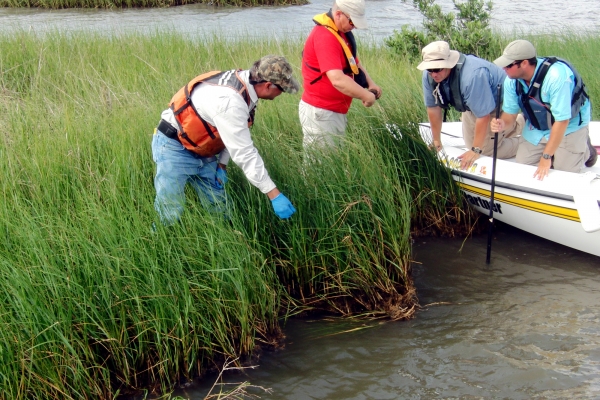
Phase Two: Focusing on Injuries
If the trustees have determined during the pre-assessment phase that resources have been damaged, they move on to injury assessment.
In this phase, trustees quantify injuries and identify possible restoration projects. Economic and scientific studies assess the injuries to natural resources and the loss of public use of these resources. These studies are also used to develop a restoration plan that outlines alternative approaches to speed the recovery of impacted resources and compensate for their loss or impairment from the time of impact to recovery.
Trustees evaluate the proposed restoration options, then draft and seek public comment on a restoration plan. The restoration plan identifies alternatives considered, discusses their evaluation, and proposes projects intended to compensate for the impacts. Examples of restoration include enhancing beach shoreline, creating oyster reefs and other shellfish habitat, and conducting species recovery and monitoring programs.
Once injury assessment is complete, the trustees then move into the final restoration phase.

